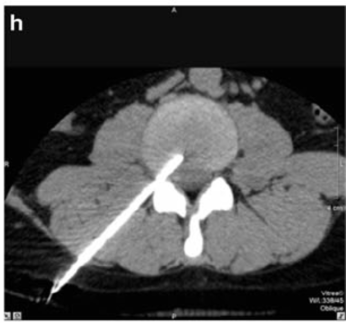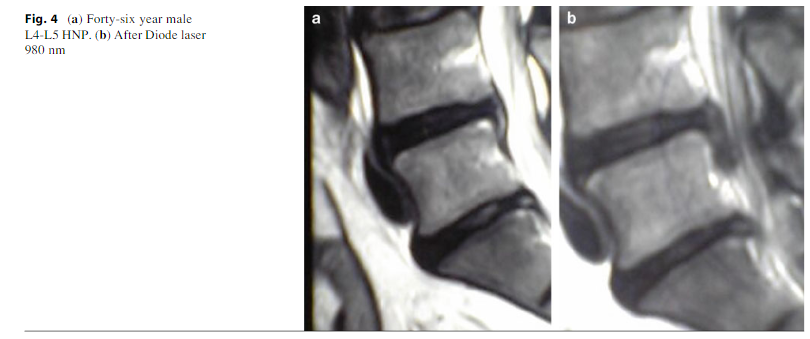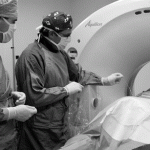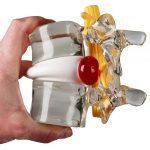The classical microsurgical approach in the treatment of herniated nucleus pulposus (HNP) has been substituted over the years by endoscopical approach, in which it is possible to practice via endoscopy a laser thermo-discoplasty, and by percutaneous laser disc decompression and nucleotomy. Percutaneous laser disc decompression and nucleotomy have been performed worldwide in more than 40,000 cases of HNP. Because water is the major component of the intervertebral disc and in HNP pain is caused by disc protrusion pressing against the nerve root, a 980 nm Diode (Biolitec AG-Germany) laser introduced via a 21-G needle under X-ray or CT-scan guidance and local anesthesia, vaporizes a small amount of the nucleous pulposus shrinking the disc and relieving the pressure on the nerve root
Method
A multicentric retrospective study with a mean follow-up of 6 years was performed on 900 patients suffering from relevant symptoms that had been therapy-resistant for 6 months on average before consulting our department. Evaluation included 585 (65%) males and 315 (35%) females. The average age of patients operated was 46 years (18-54). The success rate at a mean follow-up of 5 years (2-6 years) was about 70% with a very low complication rate.



Results
The excellent/good results at mean 5 year follow-up according to Macnab were 68%, the fair results were 10%,and the poor results were 22%. The excellent/good results after mean 3 year follow-up were 78%, fair results were 11%and poor results were 9%. VAS decreased from a preoperative 8.5 to a postoperative 2.3 at 3 year follow up to 3.4 at5 follow up. MRI or CT scan showed a reduction of disc herniation at 3 months and 1 year in only 70% of excellent/good results, because a disc shrinkage of less than 1.5–2 ml is not detectable on MRI or CT scan.
Conclusion
Regarding the use of the Diode 980 nm, we believe it to be the best and more advanced laser in the treatment of disc herniation with optimal water absorption. Because 980 nm is10 times more absorbent than 810 nm and 5 times more absorbent than 1,064 nm, requiring less laser energy; it implies less heat diffusion in surrounding tissues and no undesirable side effects.
also confirmed in an experimental study with a Diode 810 nm that Diode is less aggressive in the surrounding tissue, preserving the endplate and the vertebral body from any damage. No secondary changes on the intervertebral disc and adjacent vertebral body after Diode laser disc irradiation were detected. Experimental studies performed both on human and specimen lumbar discs using the Diode Laser 980 nm showed an absorption of laser light of 90.27% in the disc and a retraction of about 55% on 2.7 mm of the tissue after laser treatment.
Refrence
Percutaneous Laser Discectomy: Experience and Long Term Follow-Up
P.P.M. Menchetti, G. Canero, and W. Bini





